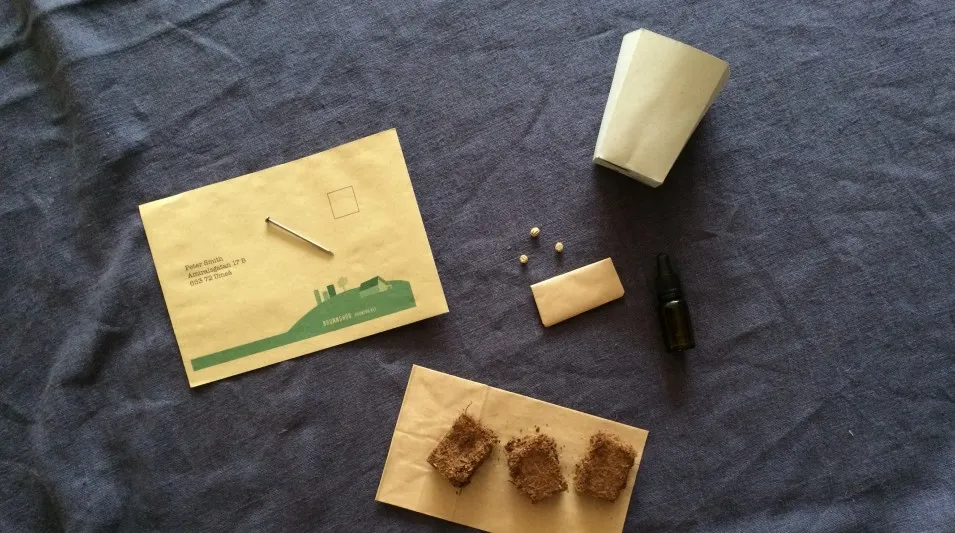In collaboration with Lund municipality, the students of the first year Digital Prototyping course investigated the opportunity for digital technologies in relation to the Brunnshög development. Eventually, the development might support living and work for 40,000 people, especially in relation to the high-tech European Spallation Source and MAX IV scientific research centres.
Groups tackled various issues, including the large influx of new residents, connecting with the nature parks, and the concerns of current Lund residents with the development.
Growing Kit
Line Göst, Johan Hellgren
This project focused on people who have decided to move to Brunnshög.
We assume they care about the environment at some level. We wanted to create curiosity towards your new neighbours and build a sense of community before you move in.
We interviewed people who have moved from afar to understand the experience of moving and wanting to connect to a new community.

BrunnsHunt
Julia Brandt, Piotr Krusynski, Thanita Thapphasut, Anna Wahl
Getting kids to move around in the area physically can make them feel more at home, and ease the disruption of moving to a new suburb. Kids are less concerned with things that lie years ahead, they’re focused on the here and now. By proposing open-ended challenges, with no “right” or “wrong” or “undo”, we can support a playful atmosphere, where spontaneity and accidents are encouraged. If we can make the participants document and share the experience, this material will both serve as a memory for them, and an entry point for others.
AR Bus Stop
Benjamin Dannegard, Theo Nordahl, Pedro Marinho, Robin Schritter, Lucas Stenberg
Through our research we found citizens of Lund were generally critical to the development of a new tram line which will service Brunnshög. Citizens cite a lack of information about the tram, its construction and purpose.
Our concept locates this information at the site of disruption as well as the site of future benefit
The display is triggered by user proximity, and allows the user to take away information from the situated display.
Brunnshood: Ride sharing
Kristina Arnold, Karl Söderby, Marjana Dragicevic, Barith Berko-Ball, Jonas Drewling
The concept is a ride-sharing app that addresses concerns about rising car traffic and develops community interaction between new residents in Brunnshög. The development already has a goal of minimal car traffic, favouring instead public transport, bikes and pedestrian traffic. Car parks for the area will be located centrally, opening an opportunity for ride-sharing.
We investigated sharing practices of the existing neighbouring community of ‘Djingis Khan’. Inspired by the social sharing practices we observered there, we attempted to frame ride-sharing as a mundane way of establishing community and considering the environment.
Walk Around Brunnshög
Josefine Hansson, Ellen Mårtensson, Alison Thomas, Stephanie Neumann, Sajad Nourian
We designed for the people of Lund who were curious about developments in Brunnshög - an area they might not frequent. We considered taking a virtual reality experience and situating it in places where people might be inclined to engage with it and along the path of the new tramline.
We spent a considerable time investigating how to interact with the experience, how to draw people into it, and how they might understand the interaction.
AR Self-Guided Tour
Alexander Grövnes, Garba Ishaku Habila, Henry Chigbo, Hafsa Mire
Our concept was a personalised self-guided tour of the construction site. This might encourage more people to visit the site, to explore it in a way that is personally interesting, and reduce the burden on municipality staff.
We developed a functional prototype to explore the user experience of an augmented tour guide.